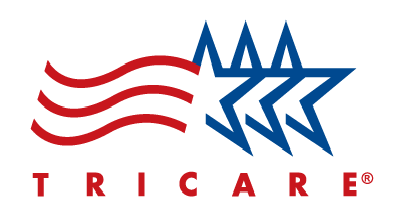What you need to know about oral cancer
Oral cancer refers to any cancer that begins in the oral cavity (mouth), which includes the lips, cheeks, tongue, roof and floor of the mouth, gums and teeth. Oral cancer can also occur in the minor salivary glands, often in the roof of the mouth.
Each year in the U.S., roughly 48,000 people will be diagnosed with oral cancer and another 9,600 will die from the disease. While anyone can develop oral cancer, men are twice as likely as women to develop the disease. It most often occurs in people over age 40.1
The risk factors and how to help prevent oral cancer
Though it’s possible to develop oral cancer with no identifiable causes, there are several known factors that can increase your risk. The Oral Cancer Foundation cites that the two greatest risk factors are drinking alcohol – especially large amounts and/or on a regular basis – and using tobacco. The risk is even greater for those who do both.
Other risk factors include:
- UV light exposure, usually from sunlight and/or tanning beds
- Human papillomavirus (HPV) infection
- Poor diet
- Weakened immune system
- Certain genetic syndromes, such as Fanconi anemia or dyskeratosis congentia
- Graft-versus-host disease (GVHD), which can occur after bone marrow or stem cell transplant
- Untreated periodontal (gum) disease
Oral cancer is not always preventable, but you can significantly reduce the likelihood of developing the disease by following a healthy lifestyle and addressing any risk factors. Some ways to prevent oral cancer include:
- Limiting your alcohol intake
- Quitting smoking
- Visiting the dentist regularly for routine exams
- Wearing protective clothing, lip balm with SPF and sunscreen while outdoors – this is especially important if you have fair skin
- Avoiding tanning beds
- Using protection during oral sex to prevent HPV
- Following a healthy diet
- Making sure dentures fit properly
- Following your physician’s advice to monitor and treat any pre-cancerous growths
The TRICARE Dental Program has you covered
If you or an enrolled family member has been diagnosed with oral cancer, the TRICARE Dental Program (TDP) Wellness Program is available to provide additional dental benefits at no cost to you. Getting the proper dental care will have a positive effect on your overall wellness as scientists continue to uncover connections between certain chronic conditions and gum disease.
Register to use TDP Wellness Program any time after your TDP effective date of coverage. Here’s how:
-
Select the red "Log in to My Account" button at the top of this page and log in using your DS Logon
-
Select “Manage My Wellness”
- Add your medical condition
With the TDP Wellness Program’s enhanced benefits you’ll get full coverage for an additional cleaning, certain periodontal services, including scaling and root planing as well as some surgical procedures, to remove the financial obstacles to total oral care.
To download a brochure about oral cancer, go here.
Source:
Be proactive: Know the symptoms of oral cancer
The oral cancer self-exam
Using a mirror, follow these steps:
- Head, face and neck – Feel along your face and neck to check for any swelling, tenderness or lumps. Look for color changes, growths or sores on your skin.
- Lips – Check for any lumps or abnormal texture. Look inside for any sores or unusual coloring.
- Cheeks – Squeeze your cheeks between your finger and thumb to feel for any tenderness or lumps. Check the insides of your cheeks for any red, white or darkened patches.
- Mouth – Look inside your mouth for unusual color, texture or swelling on the roof of your mouth, tongue or beneath your tongue. Feel for any lumps throughout your mouth.
Though many oral cancer symptoms can be credited to other factors, it’s important to be aware of the symptoms and perform self-exams at home.
Always talk to your physician or dentist if you experience any of the following symptoms for longer than two weeks:
- Mouth sore that doesn’t heal
- A lasting sore throat that doesn’t get better with treatment
- Thickening or lump in the cheek
- Mouth pain
- White or red patches on the tonsils, mouth, tongue or gums
- Tingling or numbness in the mouth or tongue
- Trouble chewing, swallowing, or moving the jaw and/or tongue
- Loosening or pain around the teeth
- Lump or mass in the neck
- Swelling of the jaw (may notice dentures not fitting)
- Consistent bad breath
- Weight loss
- Voice changes
Infographic: What You Need To Know About Oral Cancer
Every person, regardless of age, gender or race, is at risk for developing oral cancer. This infographic can help you learn more about the disease – share it with friends and family to help spread awareness and education.


